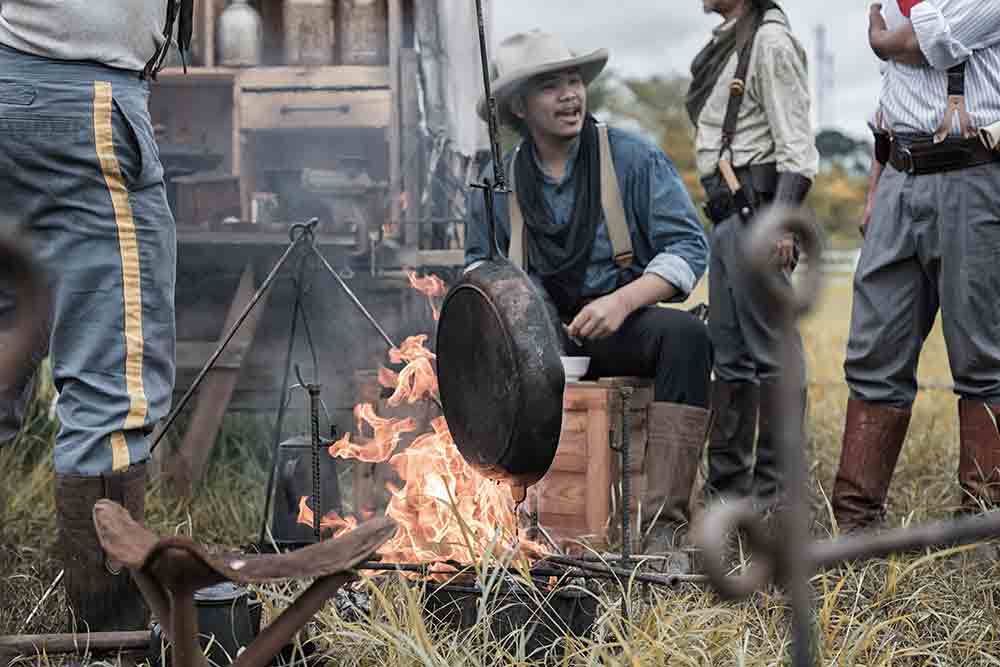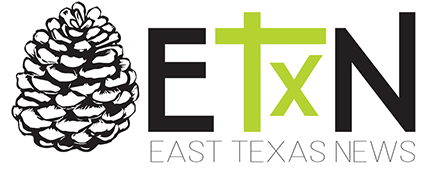 Stock Photo
Stock Photo
By Jan White
Award-winning screenwriter Taylor Sheridan has done a great job of immersing television viewers in the romanticism of the old West. With popular shows such as Yellowstone, 1883 and 1923, Sheridan has painted a compelling picture of life on the open range.
But being a drover (a person who moved livestock over long distances) back in the day was a tough job, especially for the cowboys working during the great Texas cattle drives that began in the 1860s. The peak of the trail drives lasted only about twenty years, but during those two decades, cowboys herded more than ten million cattle from Texas to railheads in Kansas and Missouri and as far north as Wyoming and into Canada.
In the early days of the cattle drive, it was tough to get cowboys willing to spend the long weeks and harsh conditions it took to complete the drive. And cowboys were expected to provide their own meals that consisted of whatever they could carry and cook themselves. The game changer came in the form of Texas rancher Charles Goodnight, who invented a food wagon explicitly for the cowboys driving their cattle from Texas north.
Although mobile kitchens had existed in some form or fashion since the inception of the cattle drives, it was Goodnight who created a prototype for the ‘official’ chuck wagon. In 1866, Goodnight took a Studebaker farm wagon and, with the help of a hired cook, added storage compartments and equipment needed for the long journeys.
The average chuck wagon was about ten feet long and 38-40 inches wide, with a sloping box called the ‘chuck box’ with a hinged lid that lay down to provide a flat working surface and a shelf underneath called a ‘boot’ to hold a dutch oven. A water barrel and coffee mill were attached to the outside of the wagon, and cowhide slings were suspended underneath to carry firewood and cow chips. Waterproof tarps held up by bowed supports covered the wagon to keep everything dry, and a canvas awning that could be rolled out in case of rain was sometimes attached to the top of the chuck box. Typically, the wagon box carried the cook’s personal items and bedroll, along with bulk food, water, tools, horse feed, and medical supplies. Most pioneer wagons were pulled by oxen, who, although slower than mules, were stronger, more dependable, and less tricky to handle.
It’s hard to know for sure where the term “chuck wagon” came from. Some say it was named after its creator, Charles “Chuck” Goodnight. Others say it came from the slang word ‘chuck,’ which was the cowboy’s nickname for the food they ate.
Food carried on the chuck wagon consisted mainly of easy-to-preserve items like salted meats, coffee, onions, beans, potatoes, lard, and flour to make biscuits. Because beef wasn’t in short supply, every good chuck wagon cook knew how to fry a steak, make pot roast, short ribs, and stews - anything that would give the cowboys enough protein and calories to help them through the arduous process of moving cattle. Occasionally there would be fresh venison or antelope shot by one of the cowboys.
Dried fruits and hard cheese were also a staple, and if the cook felt generous, he would make a dessert out of reconstituted dried fruit and biscuit pastry. Oh, and don’t forget the coffee. The old joke was that Cookie would throw a horseshoe into the coffee pot, and if it didn’t sink, the coffee was ready to drink.
Because trail drives could last as long as five months, the cook was second only to the trail boss in importance. Not only did the cook prepare meals, but he also sometimes acted as barber, dentist, and banker. These trail-drive cooks were given many nicknames, the most common being Coosie (from the Spanish word ‘cocinero’) or Cookie. But the cooks often had the reputation of being ill-tempered and stingy with food, which garnered them a few less-than-complimentary names like Pot Rustler, Lean Skillet, Old Pud, Belly Cheater, Grub Worm, Gut Robber or Sourdough.
Although his job might not have required long days in the sun and saddle like the drovers, the cook was expected to operate on less sleep. His day began at about 3 a.m. when he began preparing breakfast for the crew. As soon as it was over, Cookie had to clean up, pack up his gear and move to the next campsite, where he would set up and begin prepping for the evening meal. Along the way, he was constantly on the lookout for fuel and additional food supplies.
Most days, only two hot meals were provided for the cowboys – breakfast and supper. The evening meal was the highlight of the day. Some have described it as being ‘pleasantly barbaric,’ as you’d probably expect from a group of hard-working, sometimes less educated men and boys who spent their days on the trail and not among the civilized population.
Even though the talk was colorful and often filled with profanity, the cowboys had certain “unwritten” rules that were followed around the chuck wagon. First and foremost was not to mess with Cookie or his workspace.
On its website “Legends of America” shared a list of chuck wagon etiquette:
• No one eats until Cookie calls.
• When Cookie calls, everyone comes a-runnin.’
• Hungry cowboys wait for no man. They fill their plates and then move on so stragglers can have their turn.
• Cowboys eat first; talk later.
• It’s okay to eat with your fingers. The food is clean.
• If you’re refilling your coffee cup and someone yells, “Man at the pot,” you’re obliged to serve refills to everyone in the camp holding out their cup.
• Don’t take the last serving unless you’re sure you’re the last man.
• Food left on the plate is an insult to the cook.
• No scuffling or tying off a horse near the wagon. And when you ride off, always ride downwind from the wagon.
• If you come across any decent firewood, bring it back to the wagon.
• Strangers are always welcome at the wagon.
After a meal, the cowboys were expected to scrape their plates clean and put them in the “wrecking pan,” which was a big dishpan set aside for the cook to wash in. After washing the dishes, filling the water barrel, and dragging wood, the cook could finally relax and enjoy what was left of the evening.
And before turning in for the night, Cookie would always place the tongue of the chuck wagon facing north. That way, the trail master could look at the tongue to see what direction he’d be moving the herd that day.
You are a guest
or post as a guest
Be the first to comment.

